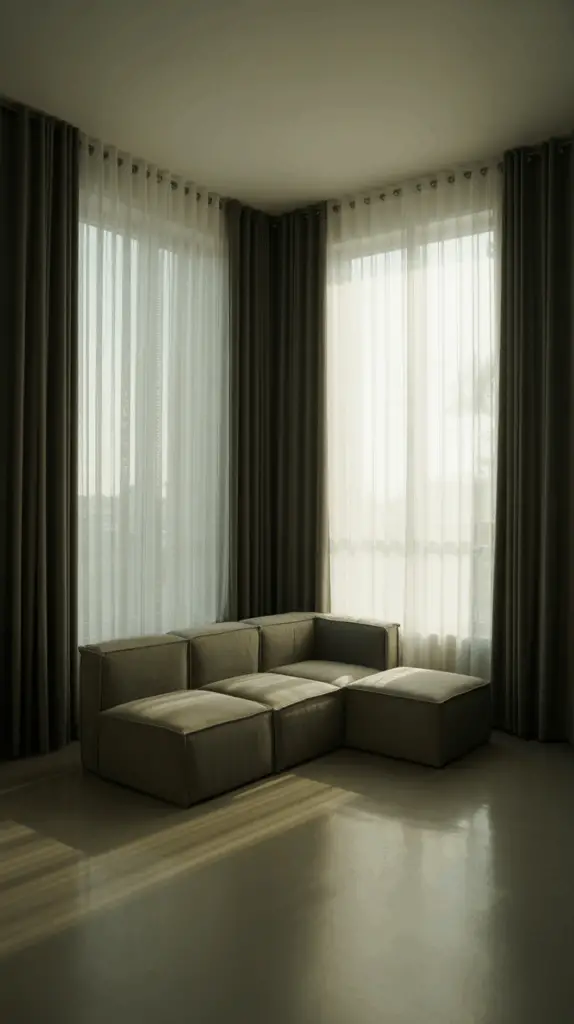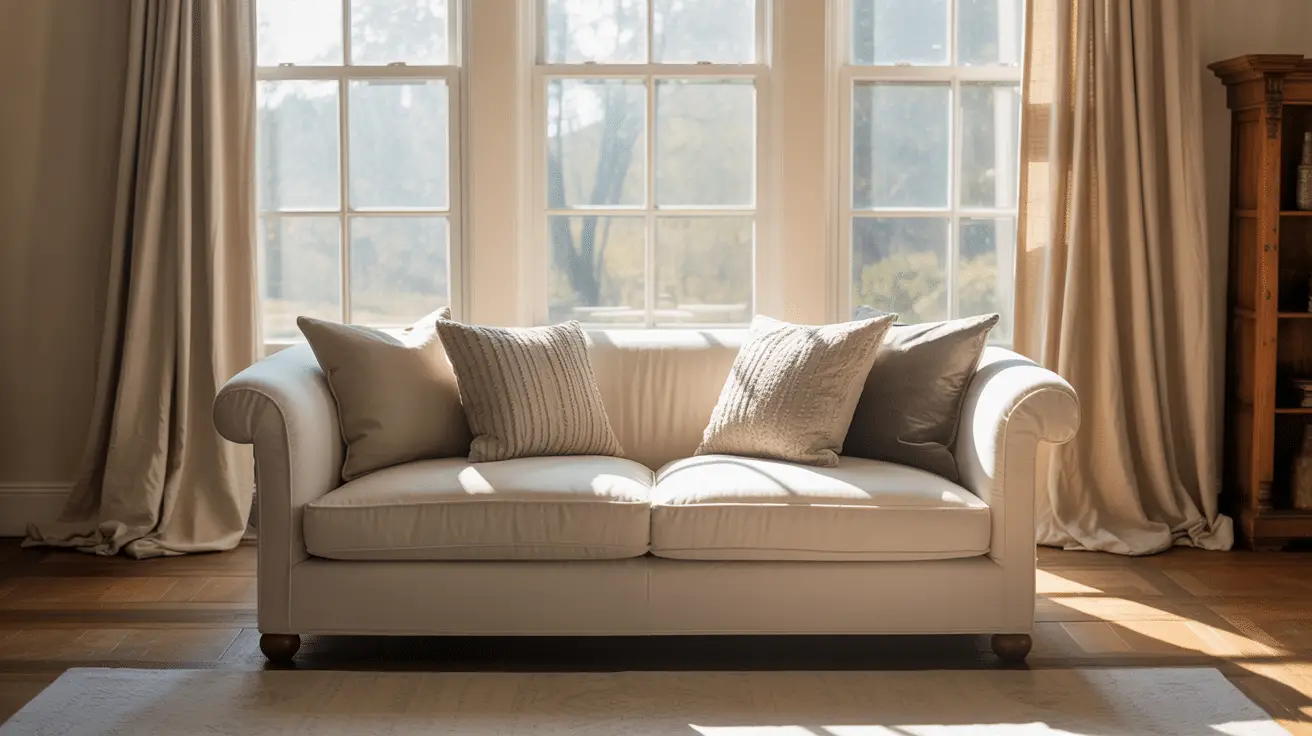Chic Drapes for Living Room: Timeless Ideas Interior Designers Swear By
Table of Contents
Introduction
Step into any beautifully designed living room, and you’ll notice one detail that consistently elevates the entire space: the drapes. According to a Houzz design survey, more than 70% of homeowners believe window treatments are essential to creating a cozy and polished living area. Drapes don’t just control light and privacy—they frame your windows, add texture, and bring personality to your space in a way few other elements can.
Yet, with countless options in fabrics, colors, and styles, choosing the right drapes for your living room can feel overwhelming. Should you lean toward dramatic velvet panels, breezy linens, or elegant sheers? Do you go bold with patterns, or keep it neutral for timeless appeal? These choices can dramatically alter how a room feels and functions.
In this article, we’ll explore chic drape ideas interior designers rely on to craft stylish, inviting living rooms. From selecting the right fabrics and colors to layering techniques and statement hardware, you’ll uncover practical tips and design secrets that transform your windows into a focal point. Whether your aesthetic is modern, classic, or bohemian, you’ll find inspiration to elevate your living space into a refined yet comfortable sanctuary.
The Power of Fabric in Living Room Drapes
Fabric is the soul of drapery design. The texture, weight, and finish of your chosen fabric set the mood in your living room. Lightweight linens and cottons bring in breezy freshness, perfect for casual or coastal-inspired interiors. In contrast, rich velvets and silks add formality and drama, making them favorites for luxurious, traditional, or eclectic spaces.
Interior designers often recommend considering how much light you want to filter. Sheer fabrics allow natural sunlight to pour in while maintaining an airy feel, while thicker fabrics with blackout lining can create a cozy, intimate atmosphere. Durability also matters—synthetic blends can resist fading and wrinkles, making them a practical choice for high-traffic living areas.
A quick breakdown of fabric choices:
| Fabric Type | Best For | Key Advantage |
| Linen | Casual, coastal, modern | Light and breathable |
| Velvet | Formal, dramatic interiors | Luxurious texture, insulation |
| Cotton | Versatile, everyday use | Easy maintenance |
| Silk | Elegant, upscale designs | Reflects light beautifully |
| Synthetic Mix | High-traffic family rooms | Durable and fade-resistant |
Choosing Colors That Complement Your Living Room
Color can completely transform how drapes influence a room’s atmosphere. Neutrals—like beige, taupe, or soft gray—blend seamlessly with most interiors, giving a timeless look that won’t overwhelm. Bold colors, however, can turn drapes into the star of the room. Emerald green or navy blue panels create striking focal points, especially in minimalist settings where the drapes introduce character and vibrancy.
Designers advise aligning drape colors with either your existing palette or one standout accent. For example, echoing the hue of your throw pillows or rug creates a harmonious flow. Alternatively, using a contrasting shade can bring balance to spaces dominated by a single tone.
Consider the psychological effect of colors too. Warm tones add coziness, while cooler shades can make a space feel airy and serene. Patterns such as stripes, florals, or geometric prints can add layers of visual interest, particularly in larger living rooms.
| Color Category | Effect on Room | Designer Tip |
| Neutrals | Calm, timeless | Great for layering with bold accents |
| Bold Tones | Dramatic, chic | Best used as a statement piece |
| Cool Shades | Fresh, airy | Pair with light wood or metal finishes |
| Warm Hues | Cozy, inviting | Works well with plush textures |

Layering Drapes for Depth and Functionality
Layering drapes is one of the most beloved tricks interior designers use to balance practicality with style. Combining sheer curtains with heavier drapes allows you to control both light and privacy with ease. During the day, sheer panels maintain brightness and openness, while evening calls for drawing the heavier layer to create warmth and seclusion.
Beyond functionality, layering also adds visual richness. Pairing contrasting fabrics, like breezy linen with structured velvet, introduces depth and texture to your décor. This technique also enables playful combinations of colors and patterns—think a neutral sheer base topped with patterned panels to create drama without overwhelming the space.
Practical layering guide:
| Layer | Fabric Choice | Purpose |
| Base | Sheer or lightweight | Diffuses light, softens the space |
| Top | Heavy fabric | Adds privacy, blocks out light |
| Accent | Valances or trims | Decorative enhancement |
The Role of Curtain Length and Placement
Length and placement can dramatically affect how your drapes shape a living room. Floor-length panels elongate walls, creating a sense of height and grandeur. For a dramatic look, designers sometimes let drapes puddle slightly on the floor, adding softness and romance. Alternatively, a clean, tailored break at floor level feels crisp and modern.
Mounting your drapes higher than the window frame—often closer to the ceiling—creates the illusion of taller ceilings and larger windows. Similarly, extending the rod wider than the frame allows more light to stream in when the drapes are open, while also making the windows appear grander.
A breakdown of lengths:
| Length Style | Effect on Space | Best Used In |
| Floating (1” above) | Crisp, modern, practical | Minimalist or casual designs |
| Breaking (touches) | Balanced, versatile | Most interiors |
| Puddling (extra 2”) | Dramatic, romantic | Formal, elegant settings |
Hardware That Makes a Statement
Many homeowners overlook hardware, but curtain rods, rings, and tiebacks are design elements in their own right. Matte black rods lend a modern edge, while polished brass introduces a touch of luxury. Wooden rods complement rustic or farmhouse décor, creating warmth and cohesion.
Tiebacks and finials are finishing touches that designers use to reinforce style. Crystal finials, for instance, add glamour, while leather tiebacks feel casual and organic. The key is aligning hardware with the overall aesthetic of your room so that every detail works together harmoniously.
| Hardware Style | Design Effect | Recommended For |
| Brass | Glamorous, warm | Traditional, luxe interiors |
| Matte Black | Sleek, modern | Minimalist, industrial spaces |
| Wood | Cozy, natural | Farmhouse, rustic décor |
| Crystal Accents | Sparkling, elegant | Glamorous, romantic designs |
Patterns and Prints That Elevate Your Space
Patterned drapes can inject personality into an otherwise neutral room. Florals evoke softness, stripes add order, and abstract motifs create a contemporary edge. However, balance is crucial—if your furniture and walls already feature bold designs, subtle drapery patterns prevent visual overload.
Interior designers often recommend mixing scale. For example, pairing small-scale patterned drapes with a large geometric rug prevents competition while still allowing both to shine. Patterns can also be used strategically to draw the eye—vertical stripes elongate walls, while large motifs anchor attention around windows.
| Pattern Type | Mood Created | Pro Tip |
| Floral | Romantic, classic | Works well with solid furniture |
| Stripes | Structured, orderly | Best for modern interiors |
| Abstract | Edgy, contemporary | Pairs well with minimal décor |
| Geometric | Dynamic, bold | Ideal for eclectic styles |
Conclusion
Drapes are far more than window coverings—they are style-defining elements that influence light, mood, and the overall atmosphere of your living room. By choosing the right fabrics, colors, and patterns, layering with purpose, and paying attention to hardware and placement, you can create a space that feels both chic and welcoming. Interior designers swear by these timeless principles because they work across styles and trends, ensuring your living room remains elegant for years to come.

